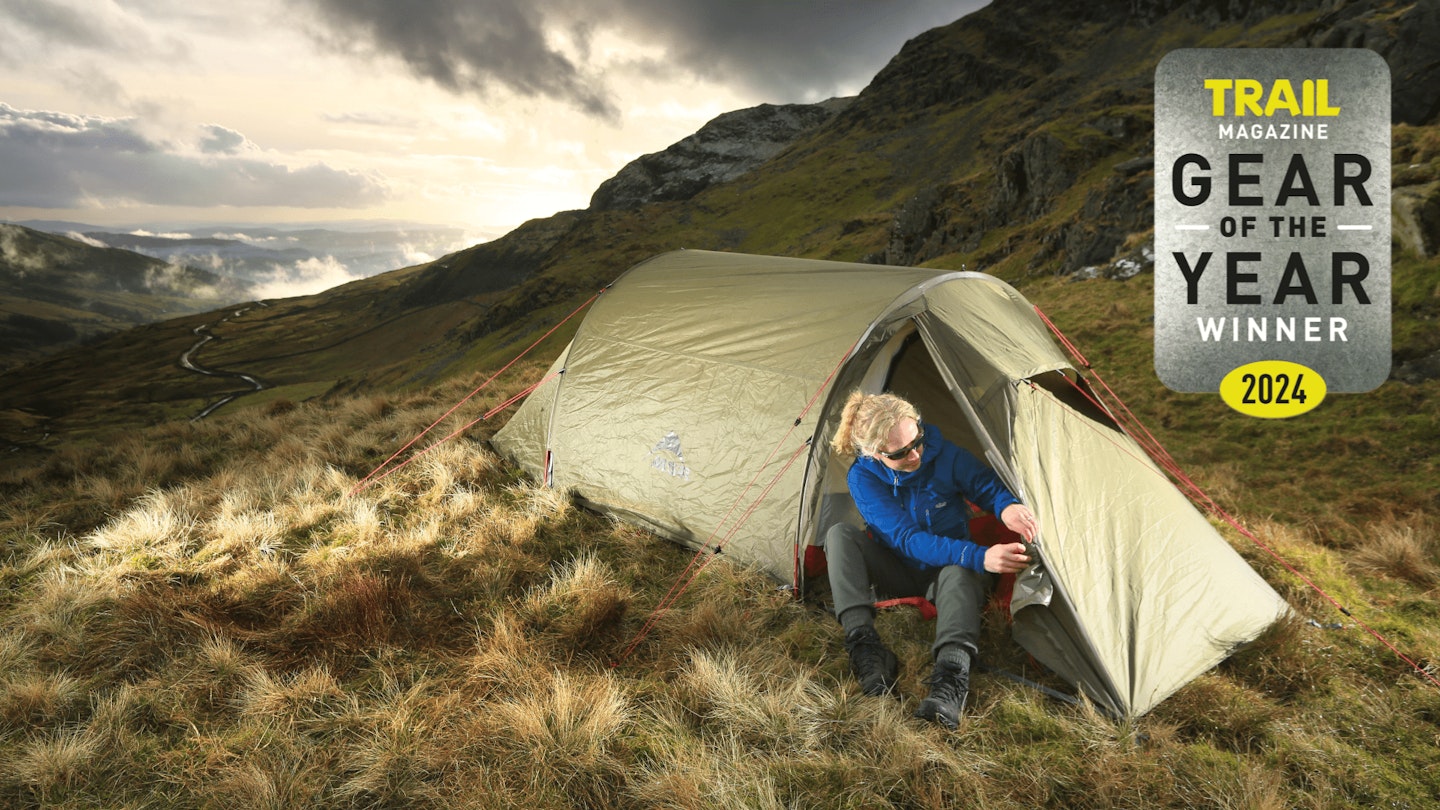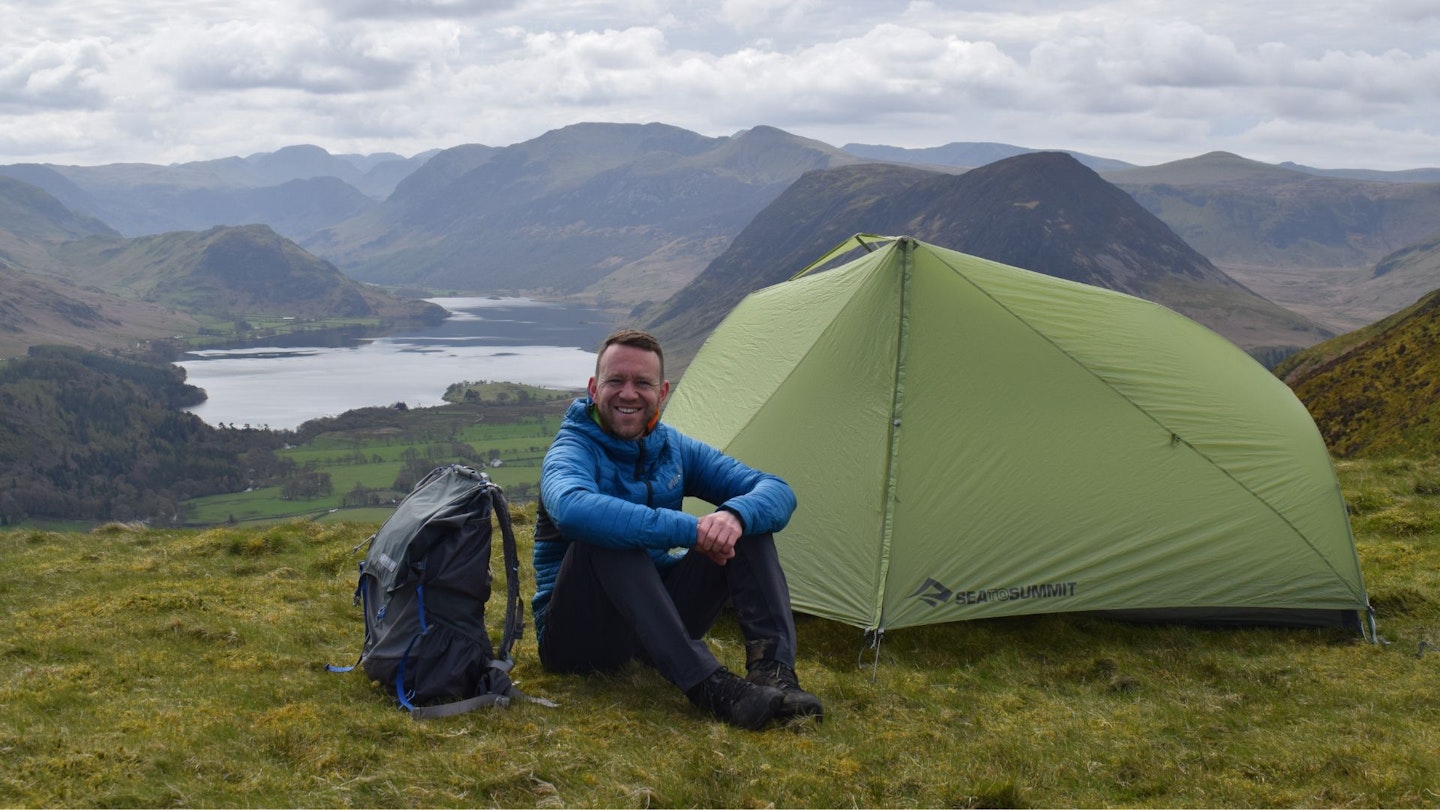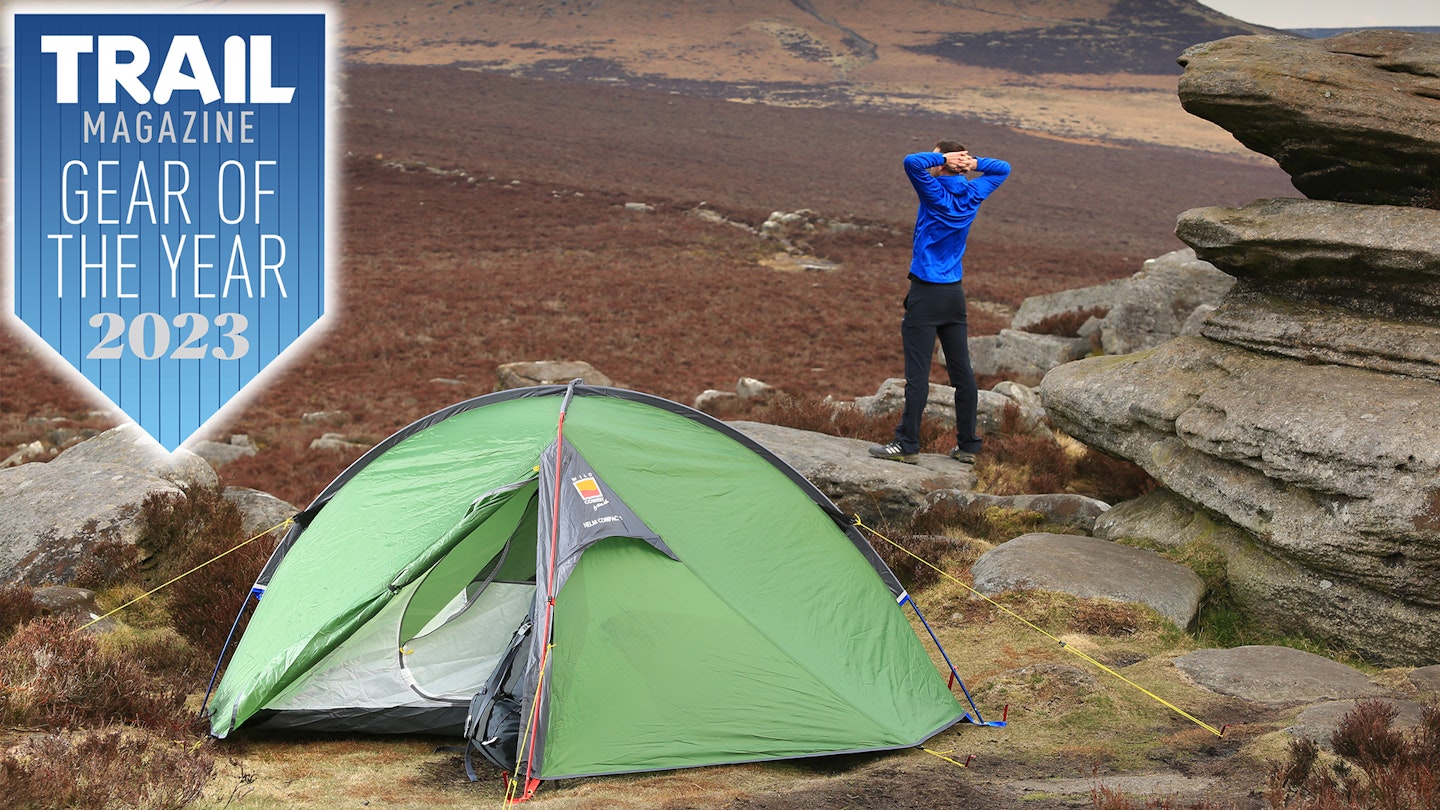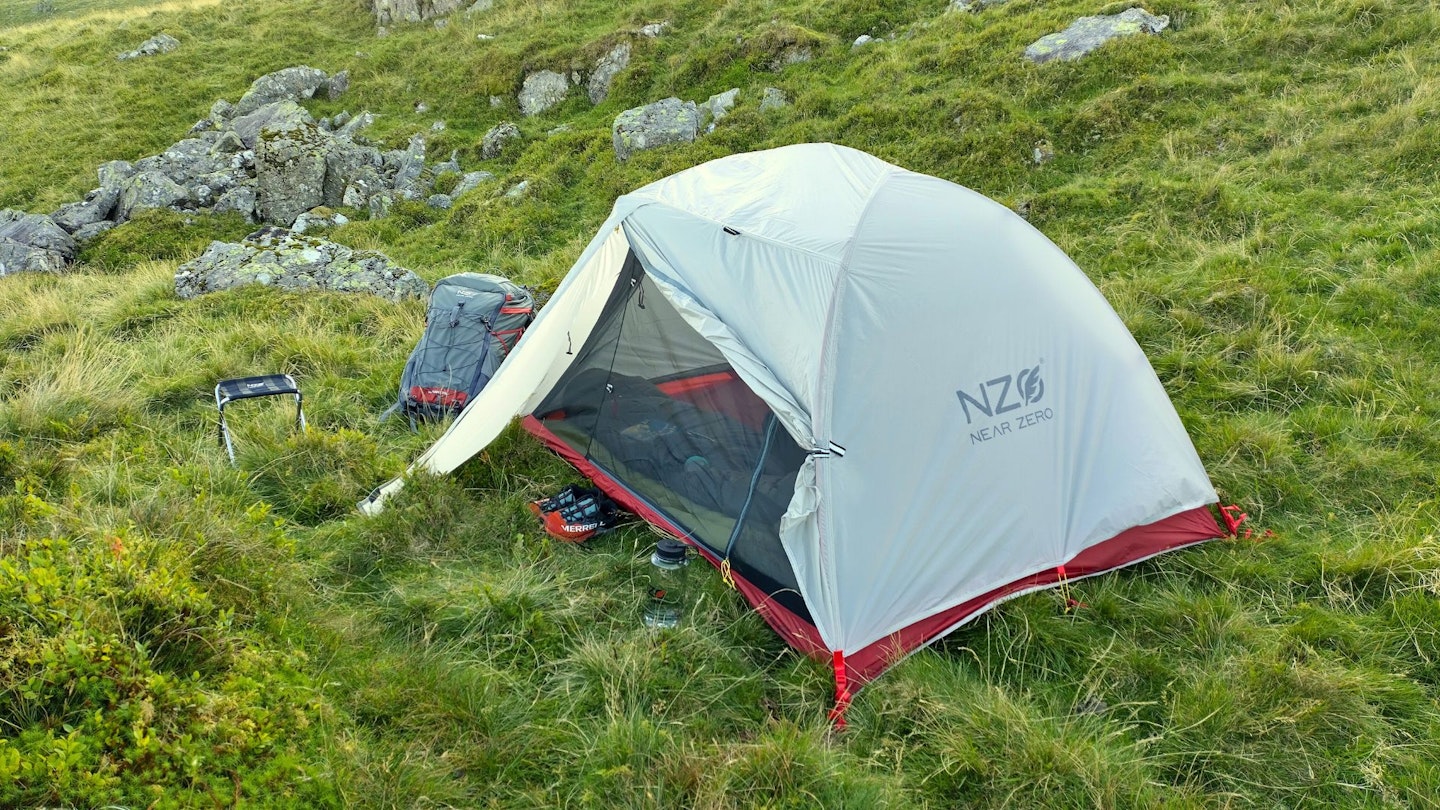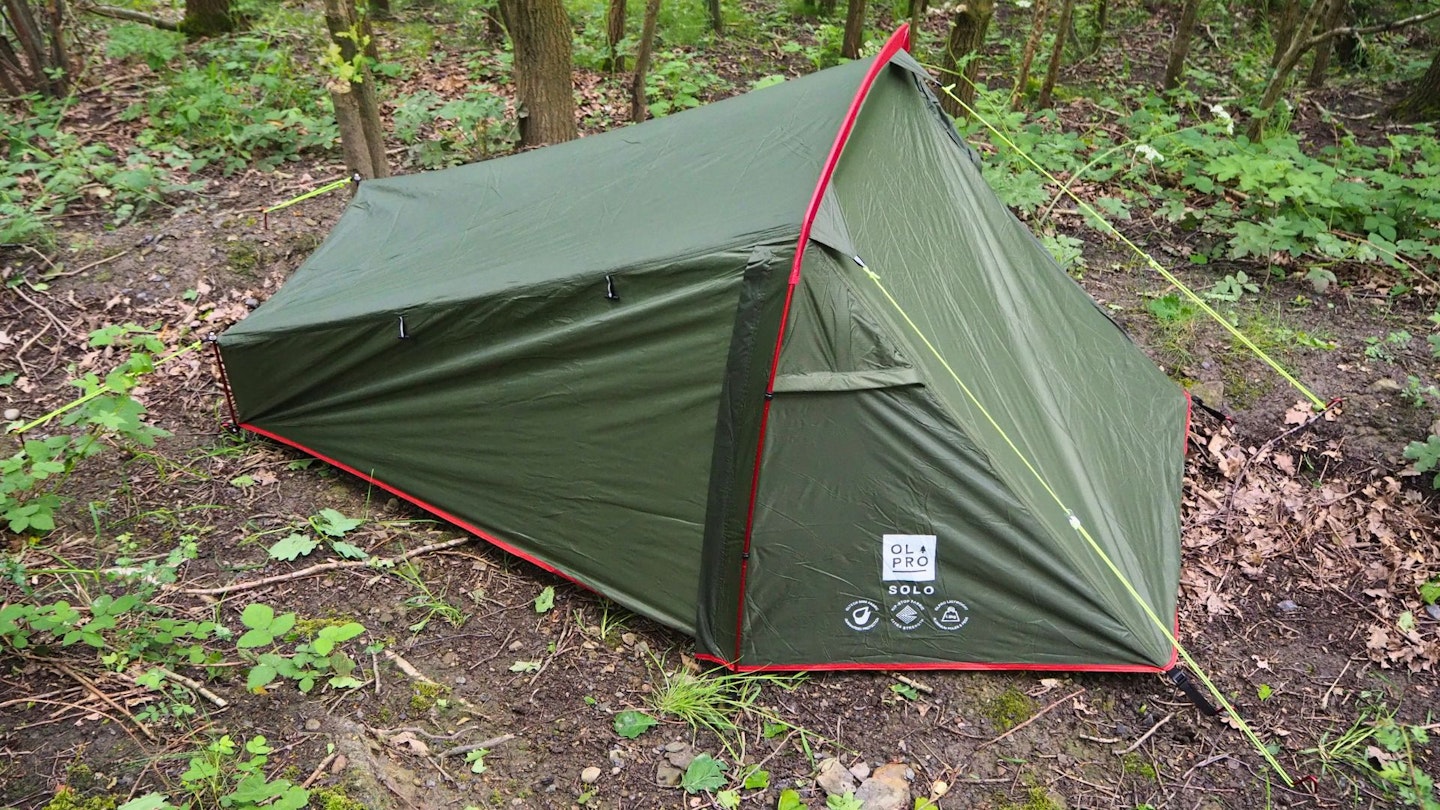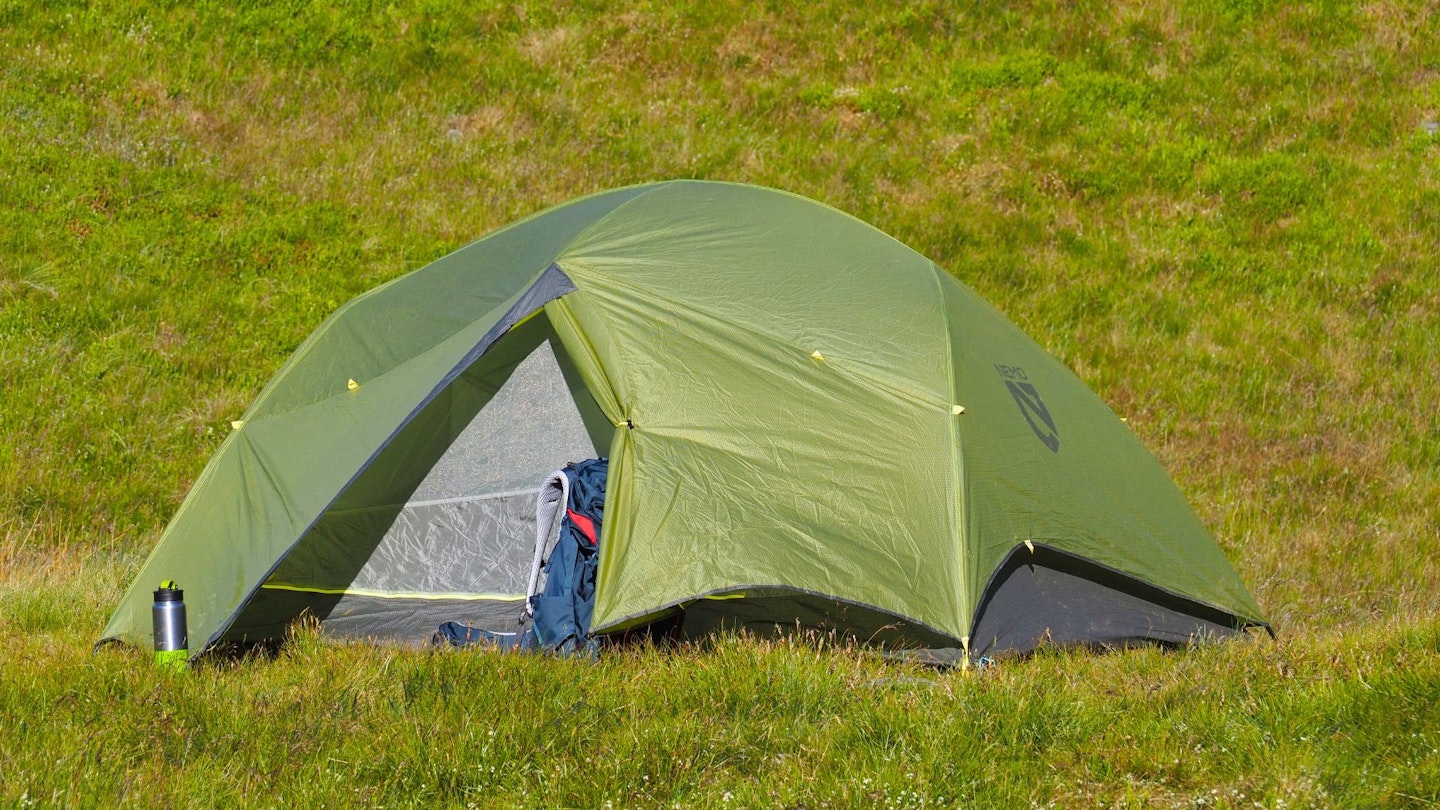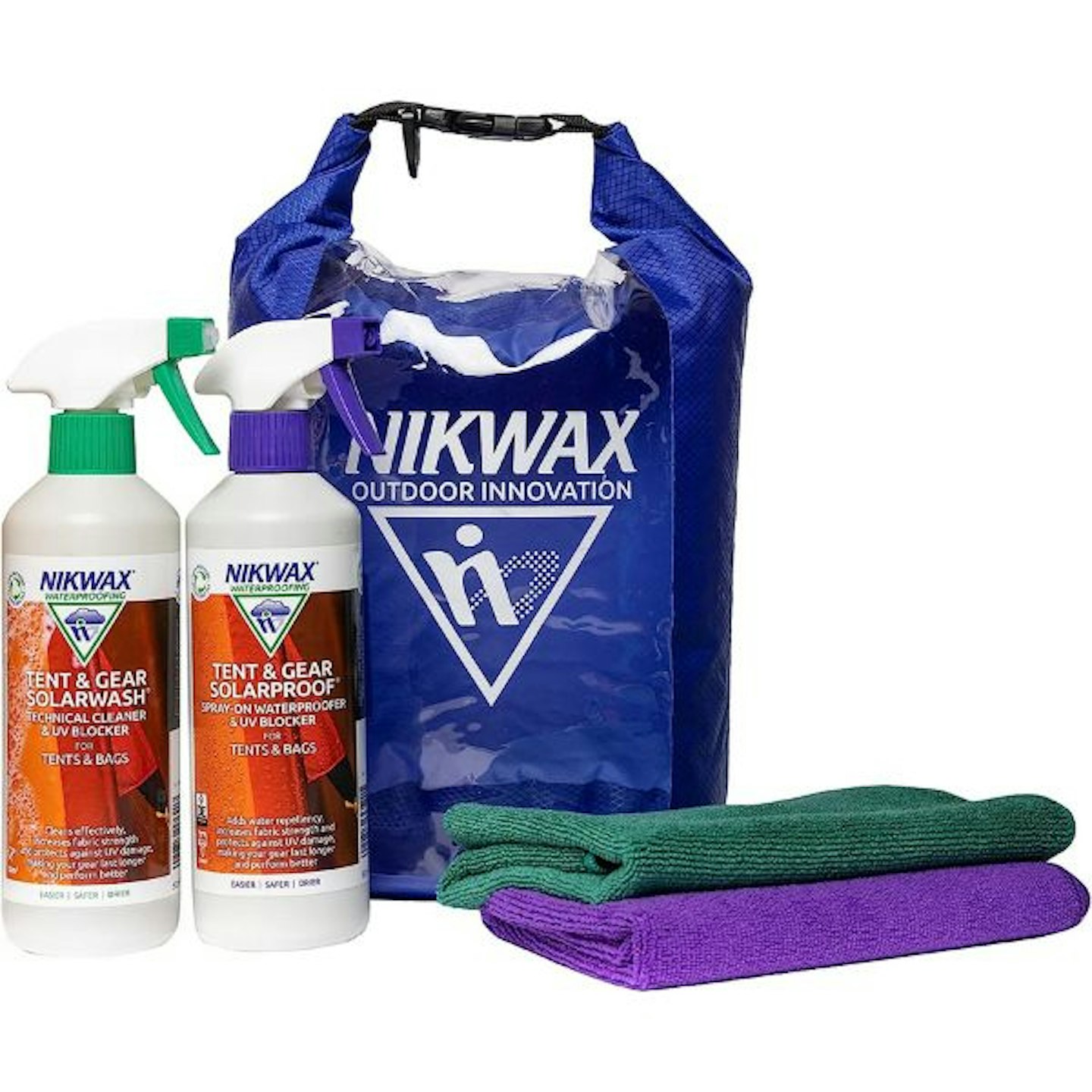When it comes to wild camping tents that you can stash in your hiking backpack and camp in the wilderness with, there are two key requirements they must adhere to.
First and foremost, they need to be compact when packed away. This is to ensure they fit in your rucksack, while allowing room for all of your other camping kit. Most wild camping tents have a compression bag but some come with more than one so you can share the load amongst your fellow hikers if required.
The second essential characteristic of a wild camping tent is a low weight. Tent weight is influenced by factors such as size and level of weather protection (the more weatherproof a tent is, often the more it weighs), but nevertheless, a wild camping tent should keep weight to a minimum (ideally no more than about 2kg for a one-person or two-person tent and about 3kg for a three-person tent).
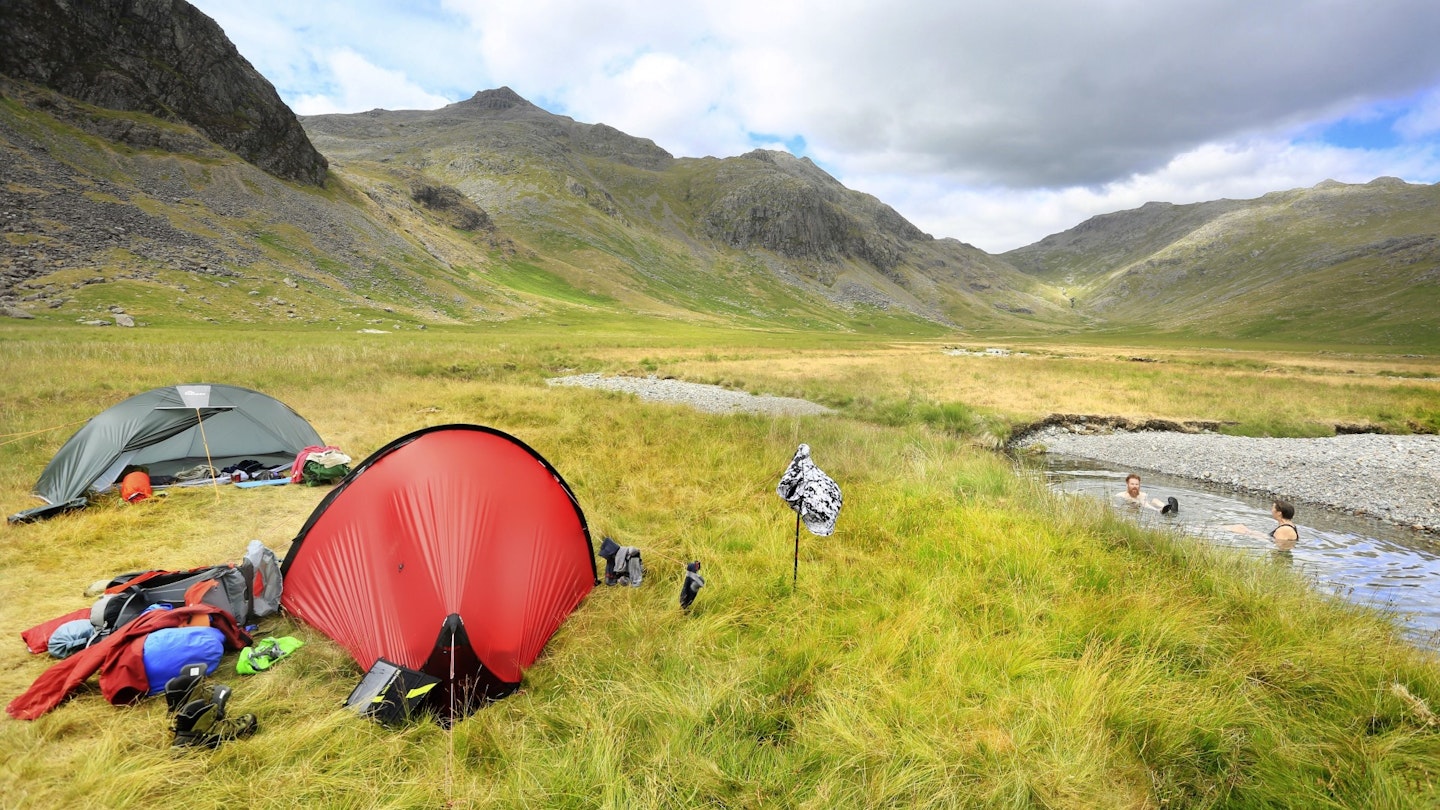
What are the best wild camping tents of 2025?
Best wild camping tent: MSR Tindheim 2
Best value Vango Apex Compact 200
Best lightweight wild camping tent: Sea To Summit Altro TR2 Plus
Best 3-season wild camping tent Wild Country Helm Compact 1
Beyond this, there are many different shapes of wild camping and backpacking tents with varying levels of weather protection and features. We go through exactly what to look for in a wild camping tent further down this guide, but first check out our top tried and tested wild camping tent recommendations.
How we tested the best wild camping tents
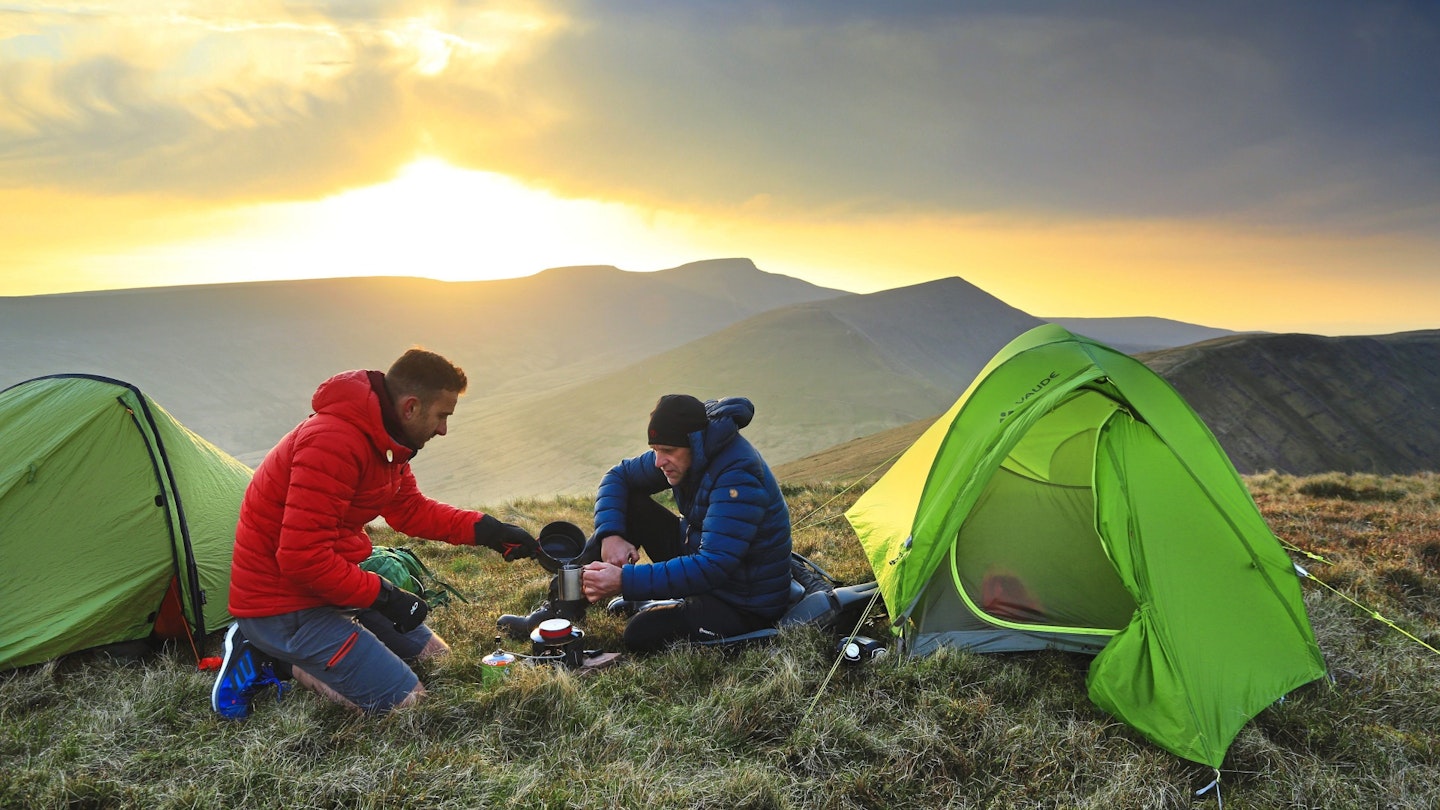
Although we test all tents of all kinds, including large family tents, those we test most frequently are wild camping tents. This is because when we embark on our overnight and multiday treks, this is the type of shelter we usually take (sometimes we’ll use bothies or bivvy bags).
The tents we test are subject to tough, real world conditions, which, thanks to the UK’s constantly changing mountain weather, are highly variable.
The models recommended here were tested by our team’s most experienced wild camping experts: our Gear Editor Ben Weeks, Senior Writer Chris Williams, and our two freelance gear testers Matt Jones and James Forrest who are both leading authorities and voices on backpacking and wild camping in the UK.
The best wild camping tents reviewed:
Low weight, compact packed size, three-season weather resistance, space, the Tindheim 2 has it all. It's perhaps little wonder that it won best tent in our Gear of the Year awards for 2024.
Being a tunnel tent (MSR's first), it has a both a generous sleeping area and porch space, which means there is ample space to store all your gear and even roomy enough to shelter inside if the weather is foul.
Pitching is super simple and can be done all-in-one or outer-first. Either way, it ensures the inner stays dry.
In addition to the relatively palatial internal space, we loved the arrangement of storage pockets and overhead gear line.
As a wild camping tent for a pair for year round use and for any trip length, it's hard to do better than the MSR Tindheim 2.
MSR Tindheim 3 here
Read our full MSR Tindheim 2 review
Pros
- Good stability
- Large living space
- Ideal for longer trips
- Outer-first and all-in-one pitching
- Stable
Cons
- Not the absolute lightest or most compact option
| Type | Tunnel |
| Weight | 3.2kg |
| Packed size | 56 x 20cm |
| Doors | 1 |
| Vestibules | 1 |
| Inner | 68D polyester and 40D nylon mesh |
| Fly | 68D polyester (1500mm HH) |
| Groundsheet | 68D polyester (3000mm HH) |
| Poles | 7000 aluminium |
The humble Vango Apex Compact tents (we tested the two-person 200 version) aren't exactly 'premium' but they have all the right ingredients and offer exceptional value. They are, therefore, among our top recommendations for wild camping, especially for those new to it.
The single hooped pole design is a tried and tested approach used by many tent brands. It's compact when packed away and stable when pitched, plus the Apex Compact groundsheet and flysheet have relatively high waterproof ratings of 3000mm and 6000mm HH respectively.
Inside, the sleeping space is comfy enough but we would suggest that those wanting a comfortable amount of space for two people should get the 300 version. The 200, we found, can cater to two but it is cosy.
The components of the Apex Compact perhaps lack a certain top-end feel that pricier rivals offer, but at this price it doesn't matter and you can buy spares poles from Vango if required via its campingspares.co.uk website.
Vango Apex Compact 100 here | Vango Apex Compact 300 here
Read our full Vango Apex Compact 200 review
Pros
- Very affordable
- Proven design
- Stable structure
- Vango sells spares and offers repair service
Cons
- Not the roomiest
- Heavier than premium rivals
- Lower quality than more expensive rivals
| Type | Tunnel |
| Weight | 2.2kg |
| Packed size | 30 x 20cm |
| Doors | 2 |
| Vestibules | 1.5 |
| Inner | Polyester |
| Fly | Recycled 70D Protex Eco (3000mm HH) |
| Groundsheet | 70D polyester (6000mm HH) |
| Poles | PowerLite 7001-T6 alloy |
We've tested both the Alto TR1 Plus and TR2 Plus and were really impressed with both by how much space they provide in such a lightweight package.
They manage this by having a cross pole at the top of the tent, which spreads the apex of the tent and improves head and shoulder space. It also boosts porch space too.
The trade-off is that it's not quite as stable in high winds as some other rivals, but the 'Plus' version of these tents go some way to address weatherproofing by making the inner from a solid fabric compared to mesh on the standard Alto while also bumping up the waterproof rating of the fabrics and making the groundsheet from tougher fabric.
For those embarking on long treks, the superb liveability of the Alto TR1, TR2, and TR3 Plus tents is extremely welcome.
Sea to Summit Alto TR1 Plus here | Sea to Summit Alto TR3 Plus here
Read our full Sea to Summit Alto TR2 Plus review
Pros
- Superb liveability
- Good headroom
- Spacious interior
- Clever design
- Impressive features
Cons
- Very expensive
- Not the best in high winds
- Hydrostatic head waterproofing rating could be
better - Materials are very thin
| Type | Semi freestanding dome |
| Weight | 1.45kg |
| Packed size | 53 x 13cm |
| Doors | 2 |
| Vestibules | 2 |
| Inner | 20D ripstop nylon |
| Fly | 15D ripstop nylon w/ silicone/polyether PU coating (1200mm HH) |
| Groundsheet | 20D ripstop nylon (2500mm HH) |
| Poles | Aluminum DAC TH72M |
Backpackers who live in places such as the UK where the weather can change in an instant often turn to reliable 3-season tents for wild camping.
In our experience, the Wild Country Helm Compact tents are the best of these, offering not only superb weather protection but value too. For these reasons, the Helm Compact 1 is a former Gear of the Year winner of ours.
The Helm Compact is a freestanding dome shape, which is where it gets its stability from, but the trade-off is it certainly isn't as spacious as some of its rivals.
The materials and components are all top notch too, with the polyester fly and groundsheets boasting 4000mm and 5000mm HH waterproof ratings respectively. The fabrics and poles can take a battering too, which we witnessed first hand on a winter trek in Wales.
Wild Country Helm Compact 2 here | Wild Country Helm Compact 3 here
Read our full Wild Country Helm Compact 1 review
Pros
- Free standing
- Tough, durable construction
- Good value
Cons
- Not the lightest
| Type | Freestanding |
| Weight | 1.99kg (plus optional 125g groundsheet) |
| Packed size | 35 x 17cm |
| Doors | 1 |
| Vestibules | 1 |
| Inner | 68D polyester |
| Fly | 68D ripstop poyester w/ PU cotaing (4000mm HH) |
| Groundsheet | 68D ripstop polyester w/ PU coating (5000mm HH) |
| Poles | 8.5mm WC Superflex Alloy |
This is probably an unfamiliar brand to you, but Near Zero is an Arizona-based company that popped up a few years ago and produces some excellent gear at great prices, which we've tested. Among these is its family of lightweight backpacking tents that we think are ideal for summer.
Apart from the floor of course, the inner material is all mesh, so ventilation is superb and the flysheet is light coloured, which prevents the tent from getting too hot. You can of course use the tent without the flysheet too and enjoy some stargazing instead if you wish.
Pitching is very easy and the tent is freestanding. Inside (we tested the two-person model), we found ample space for a pair and their gear.
If, however, the weather unexpectedly turns foul, the Near Zero tent can cope within reason. It has floor and fly waterproof ratings of 3000mm HH and decent flysheet coverage.
Near Zero Dynalite 1 here | Near Zero Dynalite 3 here
Read our full Near Zero Bundle review
Pros
- Good value
- Lightweight and compact
- Two porches
Cons
- Not the most weather resistant
| Type | Freestanding |
| Weight | 1.79kg |
| Packed size | 48 x 11.4cm |
| Doors | 2 |
| Vestibules | 2 |
| Inner | Nylon mesh |
| Fly | Silicone and PU-coated 20D nylon (3000mm HH) |
| Groundsheet | Silicone and PU-coated 20D nylon (3,000mm HH) |
| Poles | Aluminium |
Price-conscious backpackers will be thrilled by the OLPRO Solo tent. On test, it performed admirably for us and is certainly unbeatable at this price.
With its full flysheet coverage and stable shape, we were well protected from the elements, although it is quite a snug tent. The sleeping area is spacious enough for a 6ft adult but the vestibule is quite small and struggles to accommodate a large rucksack.
Pitching is super easy and can be done all-in-one or outer first.
The Solo tent even has eco credentials, using a fully recycled main material, while OLPRO itself is a certified B Corp.
Pros
- Arguably best value solo tent on the market
- Pitches outer first or all-in-one
- Good weatherproofing
- Reasonably sustainable
Cons
- Isn't as lightweight or compact as some more premium rivals
| Type | Single hooped pole (non freestanding) |
| Weight | 1.8kg |
| Packed size | 45 x 14cm |
| Doors | 1 |
| Vestibules | 1 |
| Inner | Polyester |
| Fly | Recycled polyester (5000mm HH) |
| Groundsheet | Sewn-in bathtub style |
| Poles | Aluminium |
We've tested many NEMO products over the years, including the two- and three-person versions of the Dagger OSMO and there is always a common theme: innovation.
One of the key aspects of NEMO tents is the use of the brand's OSMO fabric, which is a blend of recycled polyester and nylon (it's also PFC/PFAS-free). Most tents use a fabric that is one or the other – polyester is cheaper and better in wet conditions; nylon is lighter and stronger. NEMO made a fabric to get the best of both.
In addition, the Dagger OSMO is awash with neat features such as a clip-on storage tub for the vestibule, pockets that turn your headtorch into a lantern, and cleverly shaped vestibules and doors that are generously sized.
Like the Sea To Summit Alto, the NEMO Dagger OSMO has a cross beam at the ceiling to boost internal space. It has the same trade-off when it comes to weather resistance (the flysheet has cutouts too, which boost ventilation and drop weight but can allow blown rain to hit the inner), but liveability is fantastic.
NEMO Dagger OSMO 2P here
Read our full NEMO Dagger OSMO 3P review
Pros
- Excellent internal space and storage
- Useful 'Landing Zone' gear mat
- PFC-free and recycled
Cons
- Plastic fly clips don't feel particularly durable
- Not the best fly coverage
| Type | Freestanding |
| Weight | 2.1kg |
| Packed size | 50 x 16cm |
| Doors | 2 |
| Vestibules | 2 |
| Inner | Nylon |
| Fly | Recycled and PFAS-free poly-nylon OSMO (2,000mm HH) |
| Groundsheet | Recycled and PFAS-free poly-nylon OSMO (2,000mm HH) |
| Poles | DAC Featherlite NSL |
What to look for in a wild camping tent
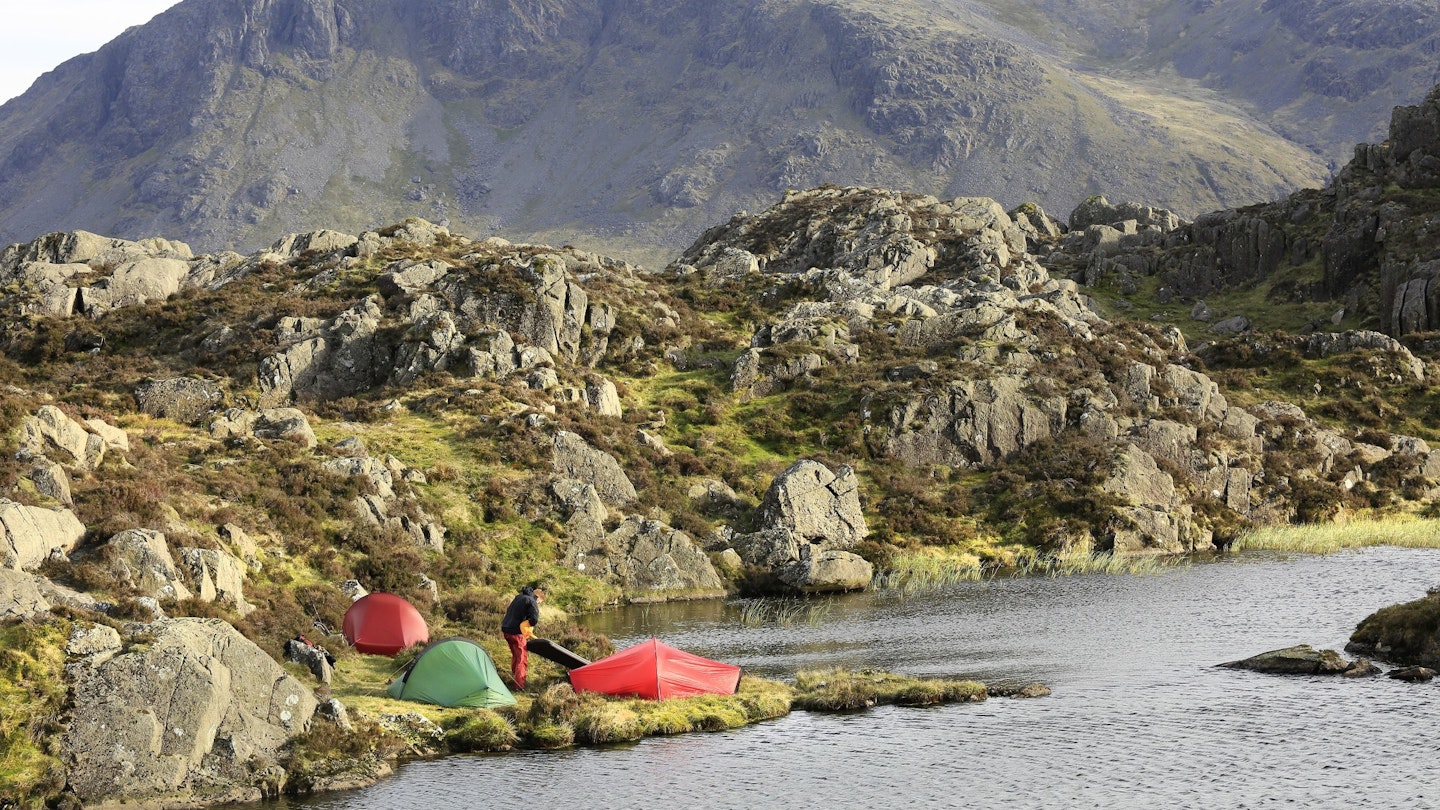
What is the best size/capacity for wild camping?
In terms of size, you’ll want to find the right balance between compactness and liveability and this often depends on the type of treks you go on.
For example, someone who likes keeping their pack weight to an absolute minimum and usually only goes on wild camps for a night or two will most likely be keen on a one-person wild camping tent because they weigh very little, pack down to nothing and are suitable for one person and their bag and nothing more.
On the other hand, a solo hiker who goes away on longer multiday hikes might want to consider a two-person tent. Likewise for a pair – consider a three-person tent instead of a two-person one because they offer a tad more space, which often makes that crucial improvement in liveability. Often the weight and packed size difference between a one- and two-person, or two- and three-person tent is negligible anyhow. The weight difference between the NEMO Dagger OSMO 2 and 3 tents, for example, is just 240g.
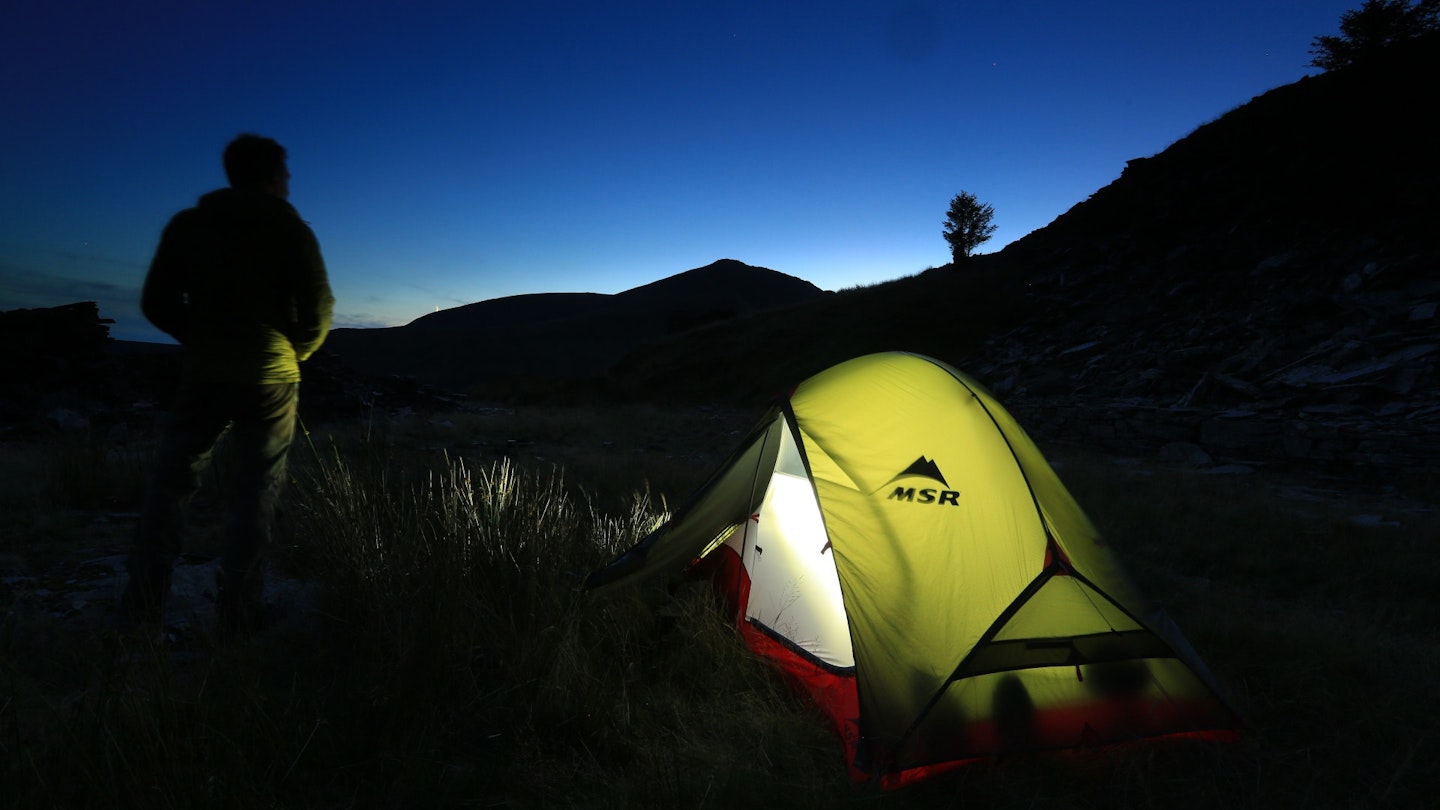
How lightweight does a wild camping tent need to be?
Before setting a weight limit, establish the type of tent you need because this will influence weight. For a highly weatherproof three-person tent you might be looking at 3-3.kg. For a summer backpacking solo tent, you can find models well under 1kg.
What’s the best tent shape/type for wild camping?
There are three common categories of tent used for wild camping: freestanding, semi-freestanding, and tunnel tents.
Freestanding tents include dome and geodesic models, which are so-called because they can stand up without guy lines, and are the best choice for use in tough weather.
Semi-freestanding models are similar to a dome tent but feature a different pole structure (a single hubbed pole compared to two or more crossing poles). They have better internal space than freestanding tents and are often lighter too. But they aren’t quite as wind resistant and stable.
Tunnel tents offer excellent internal space. They can also be very lightweight and weatherproof and are very popular for these reasons. The potential drawback is that they need guy lines to pitch and therefore require a larger campsite.
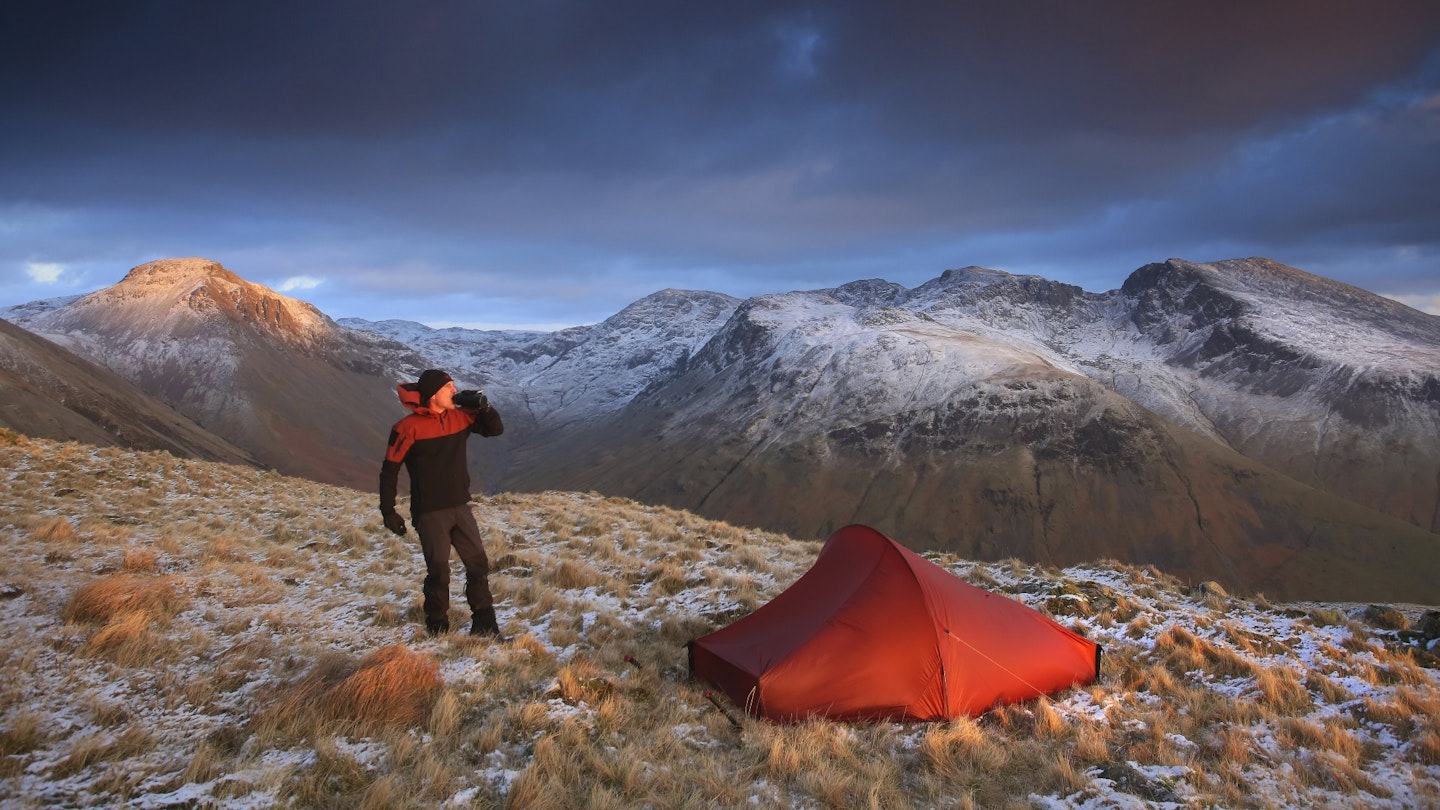
How weatherproof does a wild camping tent need to be?
It needs to be able to handle the conditions you camp in. If you head out in bone dry, balmy weather, weatherproofing isn’t a key issue – you could even head out with just a tent inner and enjoy some stargazing. But for those who go out in all weather or frequent mountain ranges, you’re going to need a tent that can handle plenty of wind and rain.
How much should I spend on a wild camping tent?
Decent wild camping tents start from as little as around £150 and ascend into the stratosphere. What you get in return for premium prices are often a lower weight and cutting edge materials and features. It’s up to you whether or not you need these upgrades. As ever, approach this from a practical, logical point of view.

What other features should I look for?
Flysheet: Tents designed for summer and warmer climes have lighter flysheets with lower waterproof ratings and often leave a large gap from the ground to improve ventilation. Those for more tumultuous weather have flysheets that reach all the way to the ground or close to it, while having higher waterproof ratings.
Water resistant coatings are usually polyurethane (PU) or silicone. PU is cheaper but silicone is lighter.
Sustainability: Check out whether a tent uses recycled and/or PFC/PFAS-free materials. Do research into the brand too. Does it offer a repair service? Can you buy spares? Does the brand have a reputation for quality? Is it transparent with its production and supply chain?
Ventilation: Backpacking tents intended for summer and warmer weather have good ventilation thanks to mesh inners and gaps in the flysheet to improve airflow. If you're getting a more weatherproof tent make sure it has well-placed vents that allow fresh air in and reduce condensation.
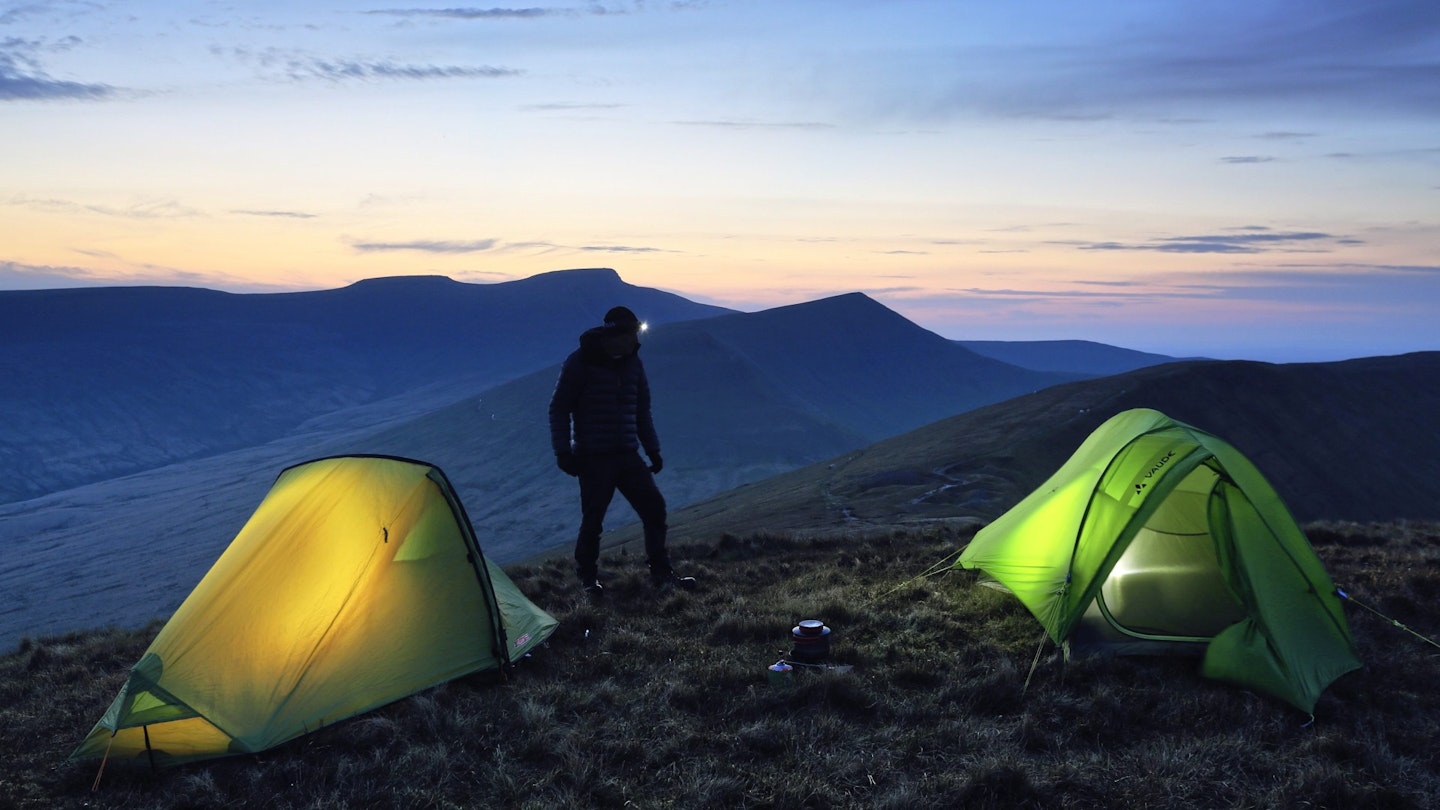
How do I clean a wild camping tent?
Firstly – why is cleaning your tent important? It keeps the fabrics in the best condition, maintaining their waterproofing. The cleaning products below also help protect tent fabrics against UV damage.
The easiest and best way to clean your tent is to pitch it at home and spot clean, first with a cleaning solution and then apply a proofing solution. See our full guide on how to clean a tent for more detailed info.
If repairs need done, you can often buy spares from the brand who should also provide a repair service (which sometimes means going through the retailer you bought it from). Alternatively, you can get repairs done by specialists such as Lanchashire Sports Repairs.
If your tent is starting to leak, follow our guide on how to waterproof a tent.
Pros
- Water-based and PFC-free
- Dry bag included
Cons
- Reproofing spray needs applied quite regularly
Pros
- Water-based and PFC-free
- Easy spray-on water repel
- Good value
Cons
- Reproofing spray needs applied quite regularly
About the author
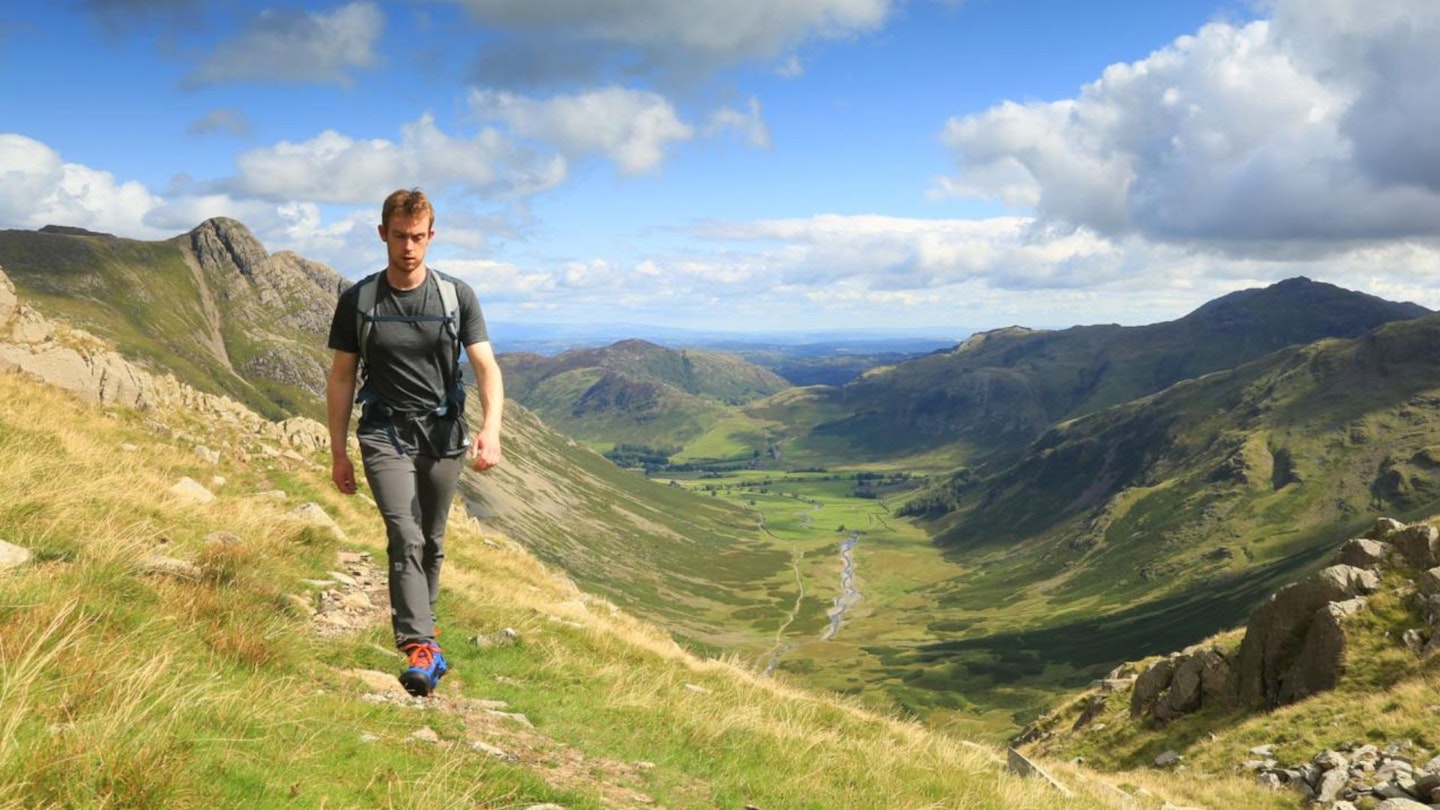
Chris Williams is the Senior Writer on LFTO. He has several years experience as a journalist and has been with LFTO since 2021. He has also worked for one of New Zealand's leading outdoor gear brands and is a true expert when it comes to hiking and camping equipment and clothing.

